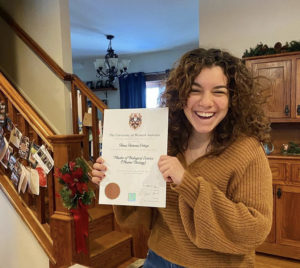When I was nine, I decided that one day I would spend every day working to save sea turtles. Now, working towards my PhD on sea turtle conservation, I do just that – except that I would never have im agined how different every day looks.
agined how different every day looks.
There are many aspects of sea turtle conservation, and I’ve been lucky enough to experience many of them. Here, I explain some of the things I’ve been able to do as a sea turtle biologist. This isn’t “a day in the life,” but any of these could be your life one day as a marine biologist.
Fieldwork is the opportunity to collect data in its natural environment. At SeaTrek, this happens every single day. I started working at SeaTrek BVI in 2018. Over the years, I’ve been the Airport Liaison, Boat Biologist, Lead Biologist, FATHOMS Lead, and Program Director. This program and its tight-knit community will always have a special place in my heart because of the fieldwork. The marine science program allows students to investigate the natural world around them, from shark sighting logs, tagging wild turtles with ARK BVI, and even create their own research projects to earn academic credit. What an incredible view into the life of salty, sandy, extraordinary marine science fieldwork!
Lab work enticed me during my undergraduate studies, and through the years, I have had the good fortune to explore. A wasp lab – where we studied their ability to recognize each other based on facial markings. A lab that studied the interaction between plankton and algae in Michigan lakes, to a governmental lab (NOAA GLERL) where I got to investigate the strength and role of toxic cyanobacteria in the Great Lakes. Lab work feels like science is depicted in the movies – white coats, nitrile gloves, sterile hoods, PCR machines, and -80 ℃ freezers. So many step-by-step guides for measuring the intensity of wasp interactions, extracting DNA from samples, growing colonies of bacteria, and measuring the toxin levels of cyanobacteria.
Rescue and rehabilitation allow you to help sick and injured turtles return to the sea.
I spent two weeks at the Karen Beasley Sea Turtle Rehabilitation Center in high school. This experience opened my eyes to the issues sea turtles face and the shock of seeing these wild animals injured, unable to dive and eat properly called me to action. It is a surreal  experience to look into a turtle’s eye, clean them, or feed them – getting to play a small role in helping even one of these dinosaurs survive is indescribable.
experience to look into a turtle’s eye, clean them, or feed them – getting to play a small role in helping even one of these dinosaurs survive is indescribable.
I’m currently working with Archelon, the Sea Turtle Protection Society of Greece, at their Sea Turtle Rescue Centre. Located thirty minutes south of Athens in Glyfada, this nonprofit organization is currently treating about thirty turtles over the winter before they are released in the warmer summer months. Turtles come to the Rescue Centre from all over Greece by plane, train, or boat; I’ve even picked up a turtle who was sent to us via a 6-hour bus ride. These turtles, suffering from mostly flipper, shell, and head injuries, or plastic and hook ingestions, are treated and rehabilitated here before their release back to sea. I’m amazed at the unique personalities of the turtles, who may be suffering from injuries but have zero hesitation about showing you which fish they will and will not eat.
Data analysis
My master’s project used existing literature, previous work, and data to answer an unanswered question. I was able to take historical population trends for several subpopulations of leatherback sea turtles and use that plus life history data to predict what will happen to these populations in the future. With increasing threats (climate change, human impact), I was able to show how quickly some of these populations could go extinct. This data compilation and predictive modeling work is helping conservationists predict the future and plan accordingly to save species now.
Scientific communication takes many forms. Sometimes scientists communicate science to eac h other in the form of published papers or academic conference presentations. Often more exciting – scientists communicate science to the public. This involves everything from social media accounts to information posters to giving tours of research facilities to the public. I studied abroad in South Caicos, and every Saturday, we hosted local kids at our center for outreach days. This involved a lot of sports, arts and crafts, swimming, bingo, snorkeling, and science lessons.
h other in the form of published papers or academic conference presentations. Often more exciting – scientists communicate science to the public. This involves everything from social media accounts to information posters to giving tours of research facilities to the public. I studied abroad in South Caicos, and every Saturday, we hosted local kids at our center for outreach days. This involved a lot of sports, arts and crafts, swimming, bingo, snorkeling, and science lessons.
Each one of these is an aspect of sea turtle conservation I’ve been lucky enough to enjoy, and I know that there are more experiences to be had in this field. It’s impossible to pick a favorite because each is unique, and each is important to the success of sea turtle conservation projects. A great way to get a head start in a marine science career is by doing something hands-on like SeaTrek BVI. There is no better way to experience marine science than getting your hands dirty and feet wet at SeaTrek!




